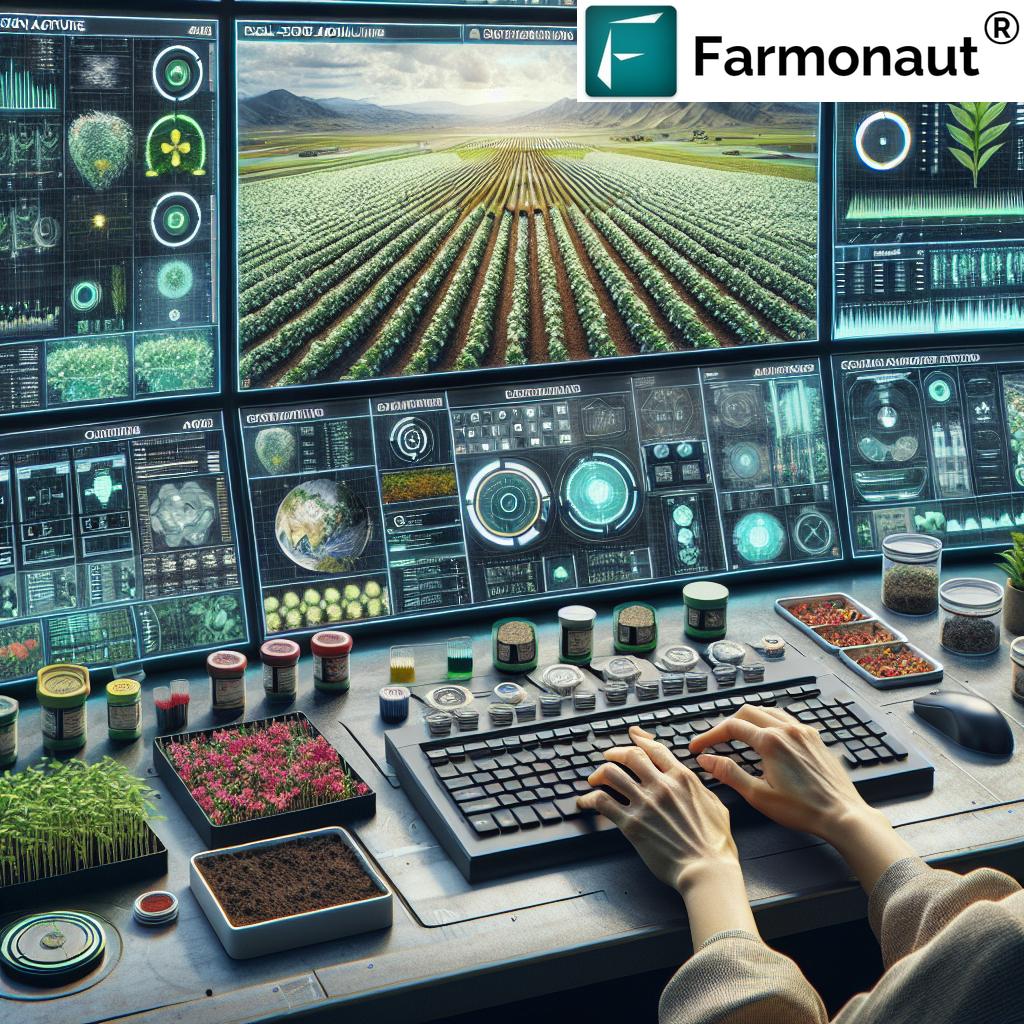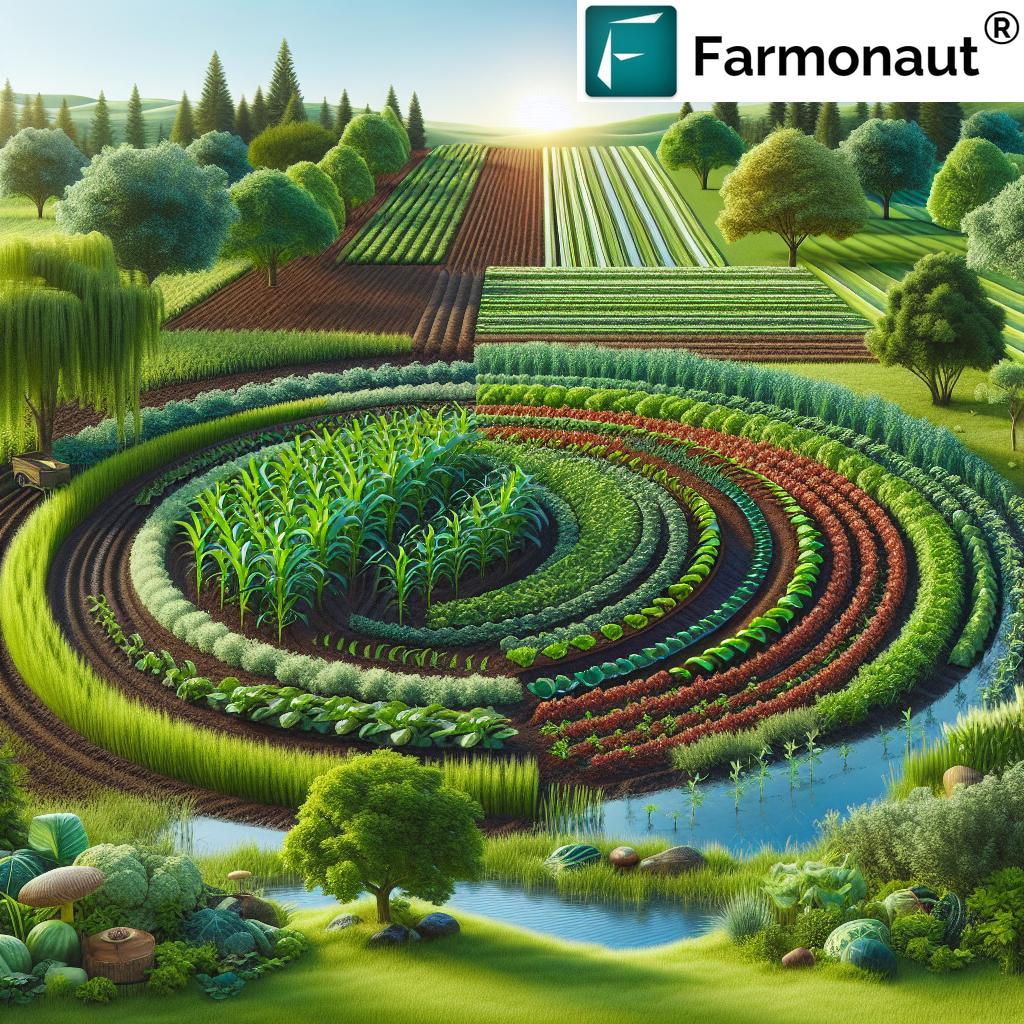Agriculture Breakthroughs: 7 Shocking Future Innovations
“By 2050, global food production must increase by 70% to feed an estimated 9.7 billion people.”
Introduction: The Backbone of Human Civilization
Agriculture, the art and science of cultivating plants and livestock, underpins the progress of human civilization. From the earliest grain fields to today’s satellite-guided tractors, its evolution has been pivotal in shaping societies, economies, and environments worldwide. As we strive to meet the growing needs of a global population facing climate change and resource limitations, new technological advancements are rewriting the rules of food production. In this comprehensive exploration, we journey through the history of agriculture, its varied farming practices, persistent challenges, and the future of agricultural technology—culminating in 7 shocking innovations that will shape our food supply for generations to come.
Historical Overview: The Evolution of Agriculture
The origins of agriculture trace back over 12,000 years to the Neolithic era, when humans transitioned from nomadic lifestyles to settled farming communities. In the lush Fertile Crescent—spanning parts of the Middle East—early civilizations mastered the cultivation of wheat and barley, alongside the domesticating of sheep and goats. This was mirrored globally:
- Rice in China
- Maize in Mesoamerica
- Potatoes in the Andean highlands
These parallel developments provided the foundation for complex societies, the division of labor, trade, and eventually, bustling urban economies.
As farming practices advanced, notable milestones emerged:
- The rise of irrigation systems and the plow in early river-valley civilizations
- Cereal domestication and animal husbandry transforming diets and settlement patterns
- Industrial Revolution innovations—mechanization, synthetic fertilizers, and selective breeding—boosting yields and reshaping rural landscapes
This evolution of farming techniques was not uniform; it was shaped by culture, geography, and resource availability, resulting in a dazzling array of agricultural systems suited to various environments.
Types of Farming Practices & Their Significance
Across centuries, farming practices have diversified to meet local conditions, preferences, and technological stages. Let’s break down the key types of agriculture that dominate global food production today:
Subsistence Farming
Most prevalent in parts of Africa, Asia, and Latin America, subsistence farming involves producing just enough food to support a family’s needs. With minimal surpluses, trade and market participation are limited. This practice relies heavily on manual labor, traditional tools, and intimate knowledge of local soils and climates.
Commercial Farming
In commercial farming, the focus shifts to large-scale production for sale. This sector sees significant investments in fertilizers, pesticides, and technology, enabling the cultivation of vast monocultures or specialized livestock operations. The economic importance is substantial, contributing majorly to national GDP and enabling international trade.
Shifting Cultivation
Common to tropical regions, shifting cultivation—or slash-and-burn farming—involves clearing plots, cultivating for a few years, then allowing the area to regenerate as the farmers move on. While considered sustainable at small scales, increasing pressure from population growth risks environmental degradation.
Pastoralism
This system revolves around the herding of domesticated animals (goats, sheep, cattle) in search of grazing lands. Common in arid and semi-arid regions, pastoralism remains a cultural cornerstone in many societies but faces mounting challenges due to climate change and competition for land.
Intensive Farming
Characterized by high input of capital and intensive use of technology, intensive farming maximizes output from a given area. It’s typified by modern greenhouse horticulture, advanced irrigation, and the use of biotechnology. While highly productive, concerns over its environmental impact—notably soil depletion and pollution—fuel the search for sustainable farming methods.
Significance of Agriculture in Society
Agriculture’s impact radiates through:
- Economic Contribution: Pillar for billions, especially in the developing world
- Food Security: Diversity of crops and livestock management ensures nutrition for global populations
- Cultural Traditions: Agricultural practices shape festivals, cuisine, and identities
- Environmental Stewardship: Sustainable methods can enhance ecosystem services; conversely, mismanagement can accelerate degradation
The importance of agriculture in society cannot be overstated—it’s the force that built our cities, economies, and ways of life.
Challenges in Modern Agriculture
Despite millennia of progress, modern agriculture faces daunting challenges threatening our ability to meet future food needs:
- Impact of Climate Change on Agriculture: Erratic weather, shifting rainfall patterns, and increased frequency of extreme events directly affect crop yields and livestock health.
- Resource Depletion: Overuse of water resources, rampant soil erosion, and excessive nutrient depletion jeopardize long-term productivity.
- Pest & Disease Management: New and resistant pests and diseases, some climate-linked, heighten risks for crops and animals.
- Economic Pressures: Market volatility, trade fluctuations, high input costs, and infrastructural challenges squeeze farmers, particularly smallholders.
- Labor Shortages: Accelerating urbanization and an aging rural population further stress the sector.
Urgent management solutions are needed—ones leveraging advanced technologies, sustainable farming methods, and data-driven insights.
Future Prospects: Innovations Transforming Agriculture
The future of agricultural technology is being shaped by an explosion of innovations that fuse digital, biological, and engineering advancements. From satellite-powered monitoring to regenerative farming approaches, these solutions aim to boost productivity, reduce inputs, and enhance sustainability.
Key technological advances and precision agriculture advancements include:
- Mechanization: Boosts efficiency and reduces labor dependence using tools from tractors to drones.
- Precision Agriculture: Deploys GPS, sensors, and AI to fine-tune input application, maximizing yields while minimizing waste (see how large-scale farmers can benefit).
- Digital Agriculture: Taps into the Internet of Things (IoT) and smart algorithms for real-time analytics and decision support.
- Biotechnology: Develops crops with targeted traits—drought tolerance, pest resistance, improved nutrition—for a rapidly changing world.
- Sustainable & Regenerative Practices: Focus on soil health, biodiversity, and resource cycling to ensure long-term agricultural viability.
“Vertical farming uses up to 95% less water than traditional agriculture, revolutionizing urban food production.”
Agriculture Breakthroughs: 7 Shocking Future Innovations
Let us now unpack the seven most transformative innovations—each one revolutionizing the future of agriculture.
-
Satellite-Powered Precision Agriculture
The integration of satellite imagery with on-ground sensors epitomizes the era of precision agriculture advancements. By capturing high-resolution data on soil moisture, vegetation health, temperature, and more, farm managers can:
- Identify stressed crops before visible symptoms develop (using NDVI/infrared analyses)
- Optimize irrigation and fertilizer schedules
- Monitor inputs remotely and reduce waste
Innovations like Farmonaut’s satellite-based farm management platform embody these advancements, offering affordable real-time monitoring for all farms—large and small—across Africa, Asia, Latin America, and beyond.
Benefit highlight for farmers: Better resource allocation, timely pest/disease alerts, up to 30% reduced input cost, and sustainably higher yields.
Explore advanced fleet and logistics tracking for agri-businesses
-
AI & Blockchain for Farm Advisory and Product Traceability
Artificial Intelligence revolutionizes crop and livestock management by digesting massive volumes of weather, soil, and satellite data—delivering personalized insights on:
- Optimal seeding dates and input application
- Real-time pest/disease management strategies
- Yield predictions for market planning
Blockchain brings unbreakable traceability systems to food supply chains, recording each step from planting to market. This reduces fraud, strengthens food safety, and enables sustainable sourcing.
Farmonaut’s product traceability solution: Enhance consumer trust with verifiable dataBenefit highlight for farmers, companies, and consumers: Data-driven guidance, transparent trade, increased access to premium markets, and regulatory compliance.
See how carbon footprint tracking drives environmental responsibility
-
Digital Twin Farms and Hyper-Local Decision Support
Digital twins are virtual models of actual farms—continuously updated with real-world data streams from IoT sensors and drones. These models simulate plant growth, disease spread, input needs, and even economic outcomes. Combining this with hyper-local weather intelligence allows for:
- Scenario analysis for crop selection based on predicted market trends and environmental shifts
- Automated risk alerts—reducing losses from drought, flood, and extreme weather
- Tailored advice per farm plot or livestock pen
Farmonaut’s web, Android, and iOS apps bring such capabilities into the hands of farmers everywhere, making advanced precision affordable.
Benefit highlight: Minimized risk, maximized farm profitability, and improved climate resilience.
-
Vertical and Urban Farming
Vertical farming transforms unused or urban spaces into multi-layered farms, enabling agriculture in city centers or areas with limited arable land. Features include:
- Hydroponic or aeroponic systems using up to 95% less water
- Year-round crop production by controlling temperature, humidity, and light
- Reduced transportation needs, fresher food, and new job opportunities for urban dwellers
This innovation is vital for the future of food security in densely populated regions.
Benefit highlight: Sustainable, hyper-local, and resilient food supply chains.
-
Biological Crop Inputs & Regenerative Techniques
Biological inputs—such as microbial inoculants and organic fertilizers—are rapidly replacing synthetic chemicals. Coupled with regenerative practices (cover cropping, no-till farming, agroforestry), they restore soil health, sequester carbon, and boost biodiversity. These methods:
- Enhance soil structure and fertility, improving water holding capacity
- Reduce the runoff of pollutants—preserving local waterways
- Support pollinator and beneficial insect populations
Track your farm’s sustainability progress with Farmonaut’s carbon footprinting tool
Benefit highlight: Long-term resilience, lower input costs, and compliance with emerging environmental standards.
-
Automated Robotics and Drone Swarms
Advanced robotics—including self-driving tractors, drone swarms, and precision sprayers—transform farm labor. These systems:
- Automate tedious or hazardous tasks like planting, weeding, and harvesting
- Enable 24/7 operations, increasing overall labor efficiency
- Apply pesticides and nutrients with pinpoint accuracy, reducing environmental impact
Such technologies are particularly crucial as labor shortages and urban migration accelerate.
Benefit highlight: Higher output with fewer resources and minimized occupational hazards.
-
Agri-Fintech & Digital Inclusion Platforms
The rise of agri-fintech solutions lets farmers access satellite-verified crop loans and insurance—unlocking capital despite limited physical documentation. With the integration of instant payment systems, blockchain-backed contracts, and satellite-based farm verification, farmers reduce risk and gain access to crucial financial services.
Benefit highlight: Financial inclusion, transparency, and improved resilience against disasters or crop failures.
Comparative Innovation Impact Table
The Farmonaut Approach: Revolutionizing Precision Agriculture
Companies like Farmonaut embody the ethos of 21st century precision agriculture. Our mission is straightforward: make data-driven, sustainable, and advanced agricultural technologies accessible and affordable for everyone—everywhere. But how exactly are we helping transform farming across all regions, from Asia to Latin America and Africa?
-
Satellite-Based Crop Health Monitoring:
Harnessing multispectral satellite images, we enable everyday farmers to monitor their fields—tracking NDVI (Normalized Difference Vegetation Index), soil moisture, and crop health in real-time. This reduces unpredictable losses, optimizes irrigation and fertilizer scheduling, and maximizes productivity. -
Jeevn AI Advisory:
Our AI-based recommendation engine provides personalized farming advice—taking into account remotely sensed crop data, weather predictions, and scientific best practices. The result: smarter, more resilient, and more productive farms. -
Blockchain Traceability:
With end-to-end product traceability, we boost food safety, compliance, and consumer trust for producers, agribusinesses, and retailers. -
Resource & Fleet Management:
Our platform offers fleet tracking services to streamline logistics, ensure safety, and minimize downtime or misuse of machinery—unlocking cost efficiency at scale. -
Carbon Footprinting:
We empower agri-businesses to monitor and reduce their carbon footprint, supporting both regulatory compliance and genuine environmental stewardship. -
Satellite-Verified Financing:
Through our satellite-based crop loan and insurance verification, farmers and bankers alike gain transparency—speeding up loan approvals, reducing fraud, and fostering financial inclusion. -
API & Integration:
For developers or enterprises wishing to access high-frequency, actionable satellite data & analytics, our API (live API link | developer docs) offers seamless, secure integration—futureproofing digital ag-ecosystem platforms worldwide.
Ready to Experience Affordable AI-Driven Farming?
Choose a Farmonaut plan that fits your scale and region:
Frequently Asked Questions (FAQ)
Q1. What are the main types of agricultural practices used worldwide?
The most common types are subsistence farming (for family consumption), commercial farming (large-scale, market-oriented), shifting cultivation (rotational, with land left fallow), pastoralism (herding livestock), and intensive farming (high input and technology for maximum yields).
Q2. How does precision agriculture benefit farmers?
Precision agriculture leverages data from satellites, IoT sensors, and analytics to provide farm-specific advice. This leads to smarter input management, higher yields, lower costs, and improved sustainability.
Q3. What are the biggest modern agriculture challenges?
Key challenges include climate change impacts, water and soil degradation, labor shortages due to urbanization, pest and disease outbreaks, and economic pressures from volatile markets.
Q4. What role does Farmonaut play in future agriculture?
Farmonaut delivers affordable, satellite-based monitoring and AI-powered advisory tools for all farmers. We help optimize crop and resource management, support sustainable farming, enable transparent supply chains, and improve access to finance.
Q5. How can smallholder farmers access these agricultural technology innovations?
Many services, like Farmonaut’s web and mobile applications, are designed to be user-friendly and cost-effective—even for small farms across Asia, Africa, and Latin America. Satellite data, AI tools, and financing options support inclusivity at all levels.
Q6. Where can I get more technical information about Farmonaut’s integration or API?
You can access our API product here: Farmonaut Live API
and view our detailed developer documentation here: Developer Docs
Conclusion: Nourishing Humanity, Preserving the Planet
The history of agriculture reflects our evolution—from primitive cultivation in the Neolithic era to the dawn of AI-enabled farming. Today, the future of food hinges on our ability to harness new technological advancements while championing sustainability and resilience.
Agriculture will continue to shape our societies, economies, and environments worldwide. By embracing innovative practices—from precision agriculture to digital, AI, and blockchain tools—we can deliver higher yields, reduce environmental impacts, and address the challenges of climate change.
At Farmonaut, we pledge to make powerful, data-driven agricultural technology accessible to everyone—farmers, researchers, agribusinesses, and governments alike. Together, we can safeguard food security, empower rural communities, and cultivate a more sustainable future for all.
Explore the future of farming with Farmonaut’s advanced solutions—your gateway to smarter, greener agriculture for the next century.













I very delighted to find this internet site on bing, just what I was searching for as well saved to fav